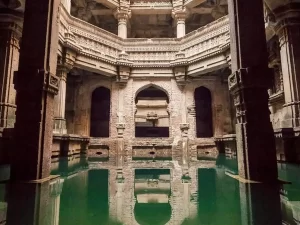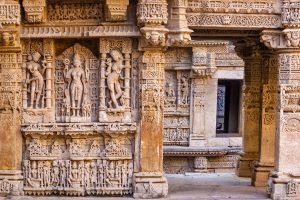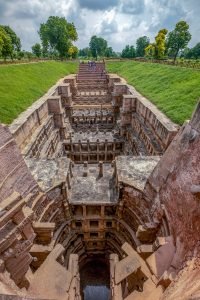Rani Ki Vav: A Hidden Gem Of Gujarat
Located in the heart of Gujarat, India, Rani Ki Vav is an ancient Stepwell that is a testament to the ingenuity and craftsmanship of the region’s rich cultural heritage. This magnificent structure, built in the 11th century AD, is a prime example of the Maru-Gurjara architectural style, which flourished during the reign of the Solanki dynasty.
History and Significance
The majestic Rani Ki Vav, also known as “Queen’s Stepwell,” is believed to have been built by Queen Udayamati in memory of her beloved husband, King Bhima I. The Stepwell was constructed during a time when Stepwells were a crucial source of water for the local population, serving both practical and spiritual purposes.

The Stepwell’s construction is attributed to the Solanki dynasty, which ruled Gujarat from the 10th to the 13th century AD. During this period, the region experienced significant cultural, economic, and architectural growth. Rani Ki Vav is one of the many architectural wonders built during this era. It shows the dynasty’s commitment to art, architecture, and public welfare.
Architecture and Design
The Stepwell’s design is a masterclass in ancient engineering, featuring a complex network of underground tunnels, chambers, and pillars. The structure uses sandstone and features intricate carvings, sculptures, and ornate decorations, showcasing the artistic prowess of the era’s craftsmen.

The Stepwell’s layout is designed to facilitate a gradual descent into the earth. Also, it has seven levels of stairs leading to the water source. The walls are adorned with over 500 sculptures, depicting various mythological and religious themes, including the Dasavataras (ten incarnations of Lord Vishnu) and the Mahabharata.
The sculptures and carvings on the walls of Rani Ki Vav are a testament to the skill and craftsmanship of the ancient Indian artisans. The intricate details and ornate decorations demonstrate a deep understanding of aesthetics and artistic expression.
Preservation and Restoration
After centuries of neglect, Rani Ki Vav was rediscovered in the 1950s and subsequently underwent a series of restoration projects. In 2014, the Stepwell was declared a UNESCO World Heritage Site, recognizing its cultural and historical significance.
The restoration process involved a team of archaeologists, architects, and conservators. They worked tirelessly to preserve the Stepwell’s original structure and beauty. The project included the removal of debris, repair of damaged walls and pillars, and conservation of the sculptures and carvings.
Tourism and Cultural Significance
Today, Rani Ki Vav is one of the most popular tourist attractions of Gujarat, drawing visitors from around the world. The site is not only an architectural marvel, but it also is a powerful symbol of enduring cultural heritage. However, visitors to Rani Ki Vav can explore the Stepwell’s intricate passageways, admire the ancient sculptures. They experience the peacefulness of the underground chambers. The site also offers a glimpse into the region’s history, showcasing the ingenuity and craftsmanship of the ancient Indians.
In conclusion, Rani Ki Vav is an extraordinary example of ancient Indian architecture, engineering, and artistry. This magnificent Stepwell is a tribute to the ingenuity and craftsmanship of Gujarat’s rich cultural heritage, inspiring wonder and awe in all who visit.



